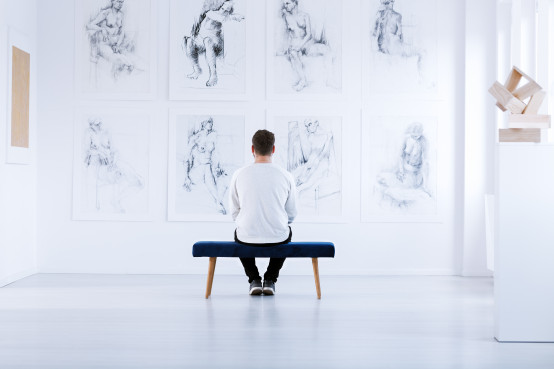Collecting prints and multiples: a brief introduction on how to start

What is a print?
A print refers to any artwork an artist makes through various iterations. Most times, the artist uses a transfer process when creating these pieces. However, the process is ever-evolving, and there are several different print techniques. The most common ones are lithography, etching, woodcut, and screen-print.
Is print a copy of the original?
The printmaking process involves reproducing an image that is already existing. However, there’s more to it. Fine art prints, for instance, need an artist and the print studio to collaborate closely when creating prints.
It requires the effort of an artist and printers (technicians working with an artist to produce an edition).
If a print is produced in a limited number, it often comes with a prescribed initial sales route, either through an artist, a publisher, or a gallery.
A print is a true art piece, valuable to the artists like any other unique works.
Why artists make prints?
Printmaking opens doors for new ideas, techniques, and materials. While this can be challenging, it is also seductive.
It requires skills and dedication since this venture is unpredictable and complicated. Through printmaking, an artist can create pieces that complement and enhance their artistic practice.
Do artists sign prints?
Most prints sold at Composition Gallery are signed. However, some pieces come without a signature, and some works are stamped signed. Other pieces have only been signed on their title page, in case of a portfolio for example.
If you see a print that’s initialed, don’t worry, as it is just as valuable. Artists like Richard Diebenkorn and Lucian Fred only used initials in their prints.
Originals Vs. Editions and Multiples
Original prints are produced in limited impression numbers, referred to as editions. They have a unique edition number that is usually a fraction like 31/50. The number below the slash’s right, in this case, 50, represents the edition size and that to the left is the print’s number, 31 in this case.
If an artist produces a limited number of proofs, it is marked as A/P (or Artist Proof). However, these prints have to be similar to the standard edition. These proofs are also represented by fractions to indicate how many they are and the print number. For example, A/P 1/5.
Sometimes the artist may make some prints in the early stages as they are trying to develop an image or test compositions. Such proofs are known as state proofs, color proofs, or trial proofs. These pieces sometimes come in unique sizes, color combinations, and paper types. Andy Warhol started selling them separately from his editions, and today, they are among his most sought after prints in the market.
Once an artist perfects an image and signs Bon à tirer (B.A.T) or ready-to-read prints, the remaining edition gets matched to the image and kept by the printer uniquely and traditionally.
Composition Gallery categorizes an original print as an artist’s limited edition conforming to other prints in their annotated listing. It can also be defined as matching other confirmed examples of the artist’s prints.
We always explain in our catalog entries and how we concluded that a print is original. We include the artist’s name, their work title, and the type of print one is, that is, screenprint, etching, or lithograph, and when it was created.
Different paper types
Papers in print are as important as the technique. Choosing the right paper is essential as it affects the printed image’s look. Jasper Johns for example, is well known for using high-quality paper on his prints. But, Warhol, famous as he is, loved using cheaper and thinner paper, especially for his Soup Can prints.
How the artist and the print studio collaborate?
There is no standard for collaboration since artists and print studios work differently on a project to bring out their talents, personalities, and resources unique to them. It’s often an intimate partnership that needs trust, willingness to work as a team, and open communication to work. It is usually relationship-driven as the publisher tries to create a suitable environment for the artist to design pieces.
Are printers artists?
Yes. Printers are considered artists in their own right, because they are an integral part of the process of creating the prints. Apart from just printing (and often also publishing), they nurture artists to create worthy pieces and work on the idea since its conception. All these can be risky and time-consuming, even with well-established artists.
Printers give artists the chance to create unique pieces. Then, they offer the needed resources for this to happen.
Prints with broader collection
Prints play several roles in a collection. They can be used to build a comprehensive collection telling people the complete story of an artist’s practice. When used this way, they feature themes and compositions in sculptures or paintings. For instance, Picasso and Johns’ prints depict how different subjects evolved along with the growth of their skills as printmakers in different years of their careers.
Prints are also a chance to own an original and authentic piece at an affordable price. They are great for beginners as they help them learn different artists and styles without denting their pockets.
Also, note that the value of print depends on several variables like an artist’s track record, project scale and scope, edition size, etc. There isn’t a standard pricing formula. Instead, the publisher and artist decide the price.


















